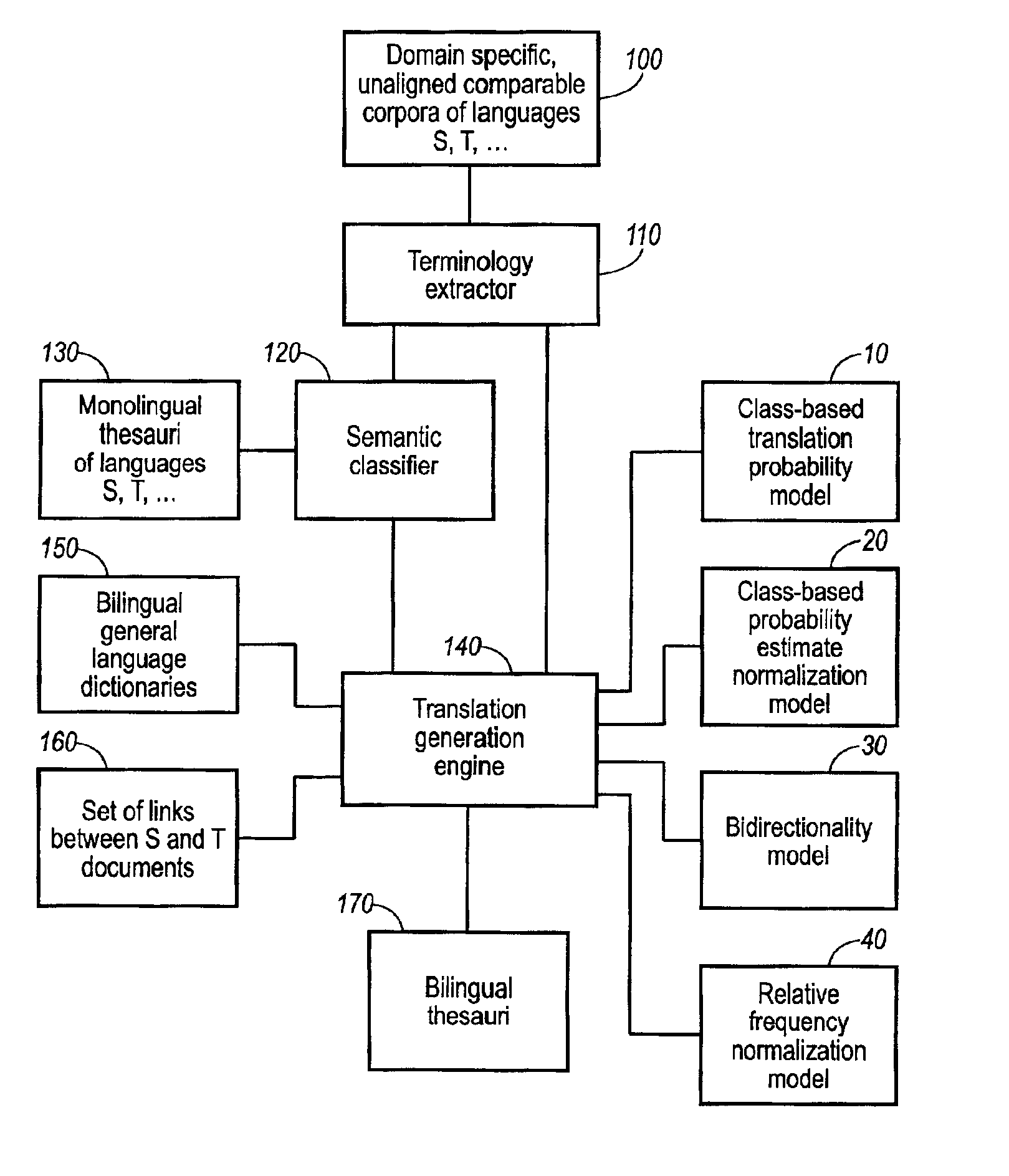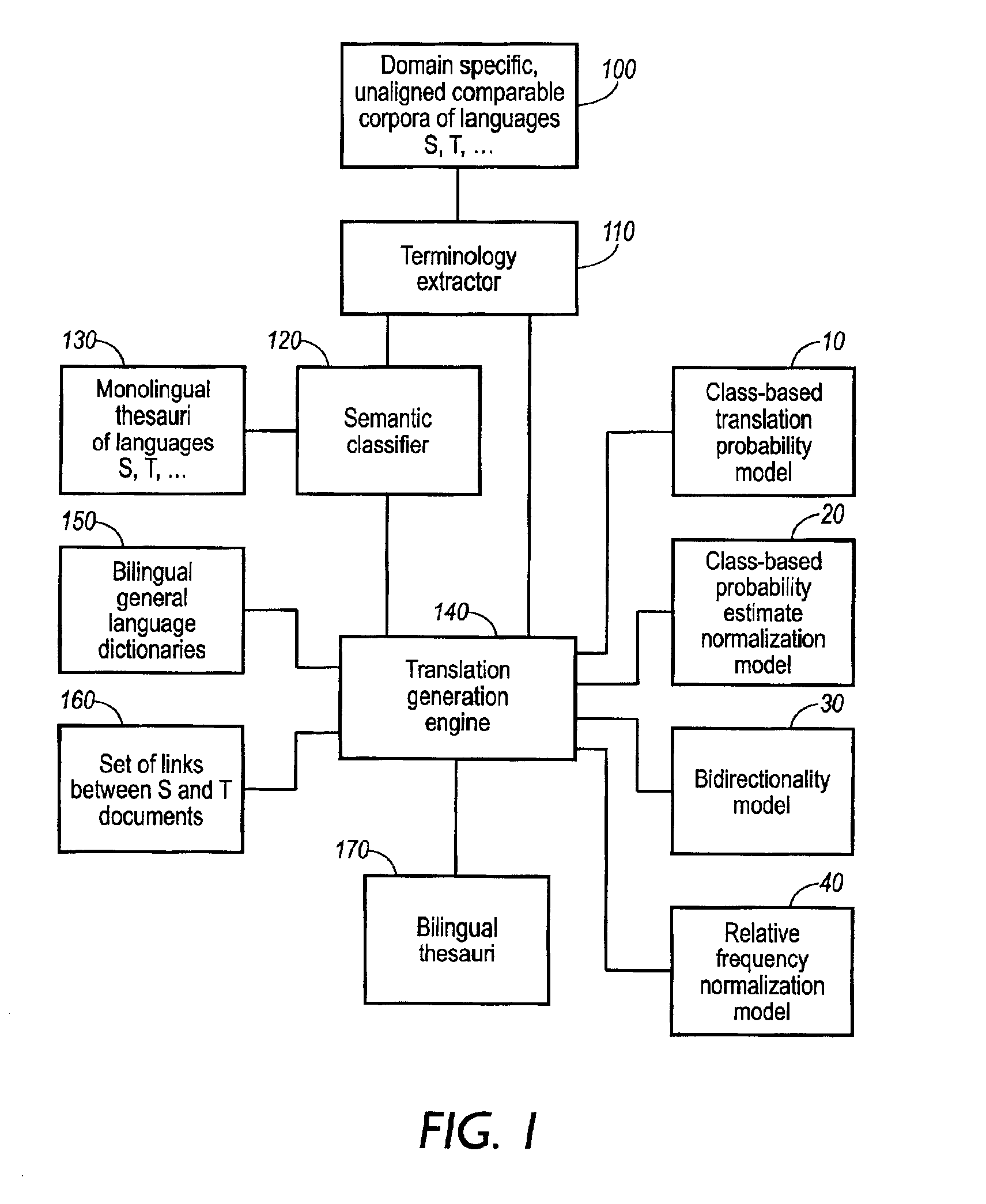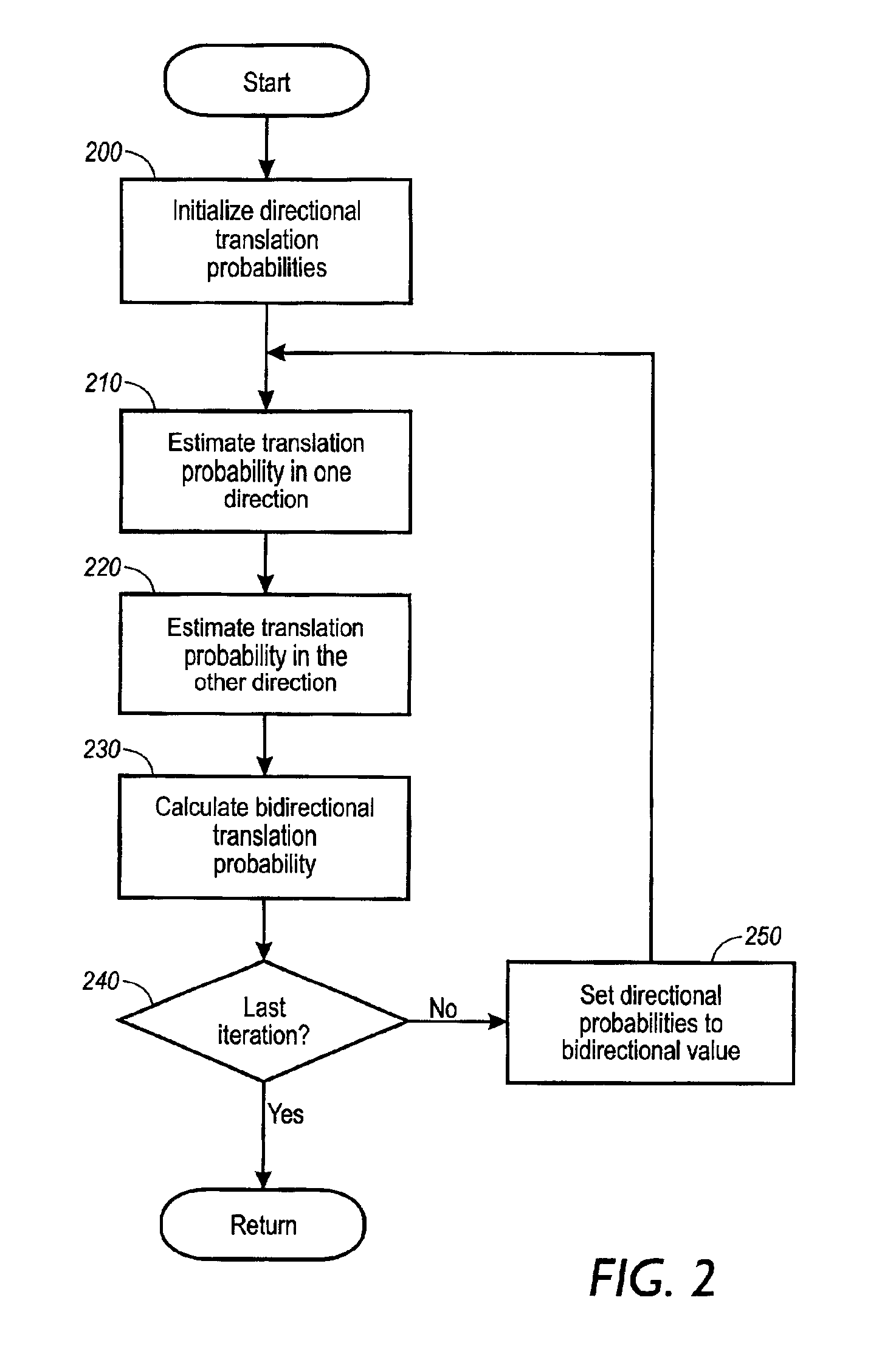Terminology translation for unaligned comparable corpora using category based translation probabilities
a technology of probability and terminology, applied in the field of natural language term translation, can solve the problems of unadjustable comparison corpora, unaligned comparable corpora, and clir being out-of-vocabulary terms, and achieve the effects of improving the quality of the retrieved set of potential translations, improving the ranking of potential translations, and improving translation speed
- Summary
- Abstract
- Description
- Claims
- Application Information
AI Technical Summary
Benefits of technology
Problems solved by technology
Method used
Image
Examples
Embodiment Construction
[0031]The illustrated embodiments of the present invention will now be described with reference to the figure drawings.
[0032]Referring now to the drawings and particularly to FIG. 1, which illustrates a preferred embodiment of a translation system, there is provided a terminology extractor 110 which might for instance be a software tool for automatic terminology extraction in languages S (source) and T (target) etc. The terminology extractor 110 has access to large corpora 100 in languages S and T specific to a certain domain with similar coverage of the domain.
[0033]The size of the corpora 100 required to make the invention work properly depends on the specificity of the domain. A very narrow domain, measured by the amount of specialized terminology, will require less text than a broader domain.
[0034]The corpora 100 are unaligned but comparable i.e. the corpora in the two languages S and T have similar coverage, that is they cover more or less the same subject matter within the dom...
PUM
 Login to View More
Login to View More Abstract
Description
Claims
Application Information
 Login to View More
Login to View More - R&D
- Intellectual Property
- Life Sciences
- Materials
- Tech Scout
- Unparalleled Data Quality
- Higher Quality Content
- 60% Fewer Hallucinations
Browse by: Latest US Patents, China's latest patents, Technical Efficacy Thesaurus, Application Domain, Technology Topic, Popular Technical Reports.
© 2025 PatSnap. All rights reserved.Legal|Privacy policy|Modern Slavery Act Transparency Statement|Sitemap|About US| Contact US: help@patsnap.com



